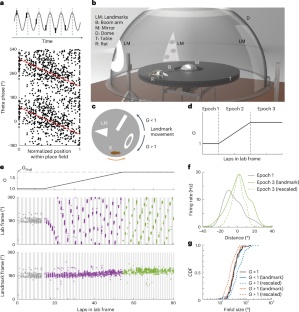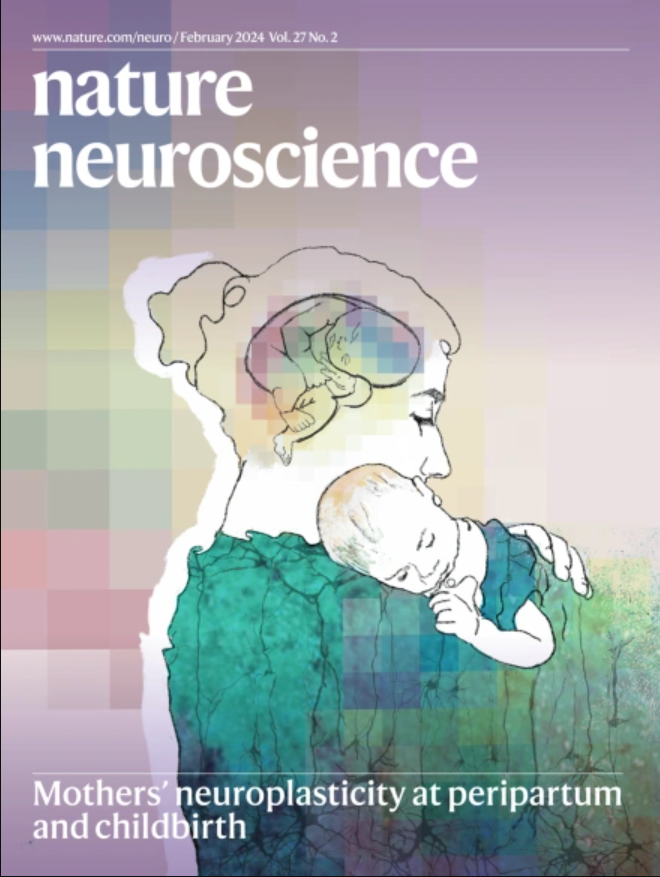同种和独特的空间线索控制着位置细胞的多路θ相位编码
IF 20
1区 医学
Q1 NEUROSCIENCES
引用次数: 0
摘要
θ波振荡被认为是海马计算的一个时间支架,它组织了被称为位置细胞的空间调谐细胞的活动。theta的后期阶段通过阶段“进动”支持前瞻性空间表征。相比之下,一些研究假设,theta的早期阶段可能通过阶段“处理”和新关联的编码来支持回顾性空间表征。本文结合虚拟现实、电生理学和计算建模,为这种功能复用的相位代码提供了实验证据,并描述了不同的空间输入如何控制其表现。具体来说,当大鼠不断学习外部地标(异体)线索和自我运动(异体)线索之间的新联系时,阶段“进动”保持完整,允许连续预测未来的位置。相反,“处理”阶段被减弱,与在早期θ波阶段编码的假定作用相匹配。这种多路复用相位码可以用作亚秒尺度上交替进行不同计算的一般电路逻辑。本文章由计算机程序翻译,如有差异,请以英文原文为准。


Allothetic and idiothetic spatial cues control the multiplexed theta phase coding of place cells
Theta oscillation is considered a temporal scaffold for hippocampal computations that organizes the activity of spatially tuned cells known as place cells. Late phases of theta support prospective spatial representation via phase ‘precession’. In contrast, some studies have hypothesized that early phases of theta may subserve both retrospective spatial representation via phase ‘procession’ and the encoding of new associations. Here, combining virtual reality, electrophysiology and computational modeling, we provide experimental evidence for such a functionally multiplexed phase code and describe how distinct spatial inputs control its manifestation. Specifically, when rats continuously learned new associations between external landmark (allothetic) cues and self-motion (idiothetic) cues, phase ‘precession’ remained intact, allowing continuous prediction of future positions. Conversely, phase ‘procession’ was diminished, matching the putative role in encoding at the early theta phase. This multiplexed phase code may serve as a general circuit logic for alternating different computations at a sub-second scale. Using a virtual reality apparatus in rats that dissociates external landmarks from self-motion cues, the authors describe how the two modes of theta phase coding in the hippocampus during navigation are controlled via distinct computations.
求助全文
通过发布文献求助,成功后即可免费获取论文全文。
去求助
来源期刊

Nature neuroscience
医学-神经科学
CiteScore
38.60
自引率
1.20%
发文量
212
审稿时长
1 months
期刊介绍:
Nature Neuroscience, a multidisciplinary journal, publishes papers of the utmost quality and significance across all realms of neuroscience. The editors welcome contributions spanning molecular, cellular, systems, and cognitive neuroscience, along with psychophysics, computational modeling, and nervous system disorders. While no area is off-limits, studies offering fundamental insights into nervous system function receive priority.
The journal offers high visibility to both readers and authors, fostering interdisciplinary communication and accessibility to a broad audience. It maintains high standards of copy editing and production, rigorous peer review, rapid publication, and operates independently from academic societies and other vested interests.
In addition to primary research, Nature Neuroscience features news and views, reviews, editorials, commentaries, perspectives, book reviews, and correspondence, aiming to serve as the voice of the global neuroscience community.
 求助内容:
求助内容: 应助结果提醒方式:
应助结果提醒方式:


